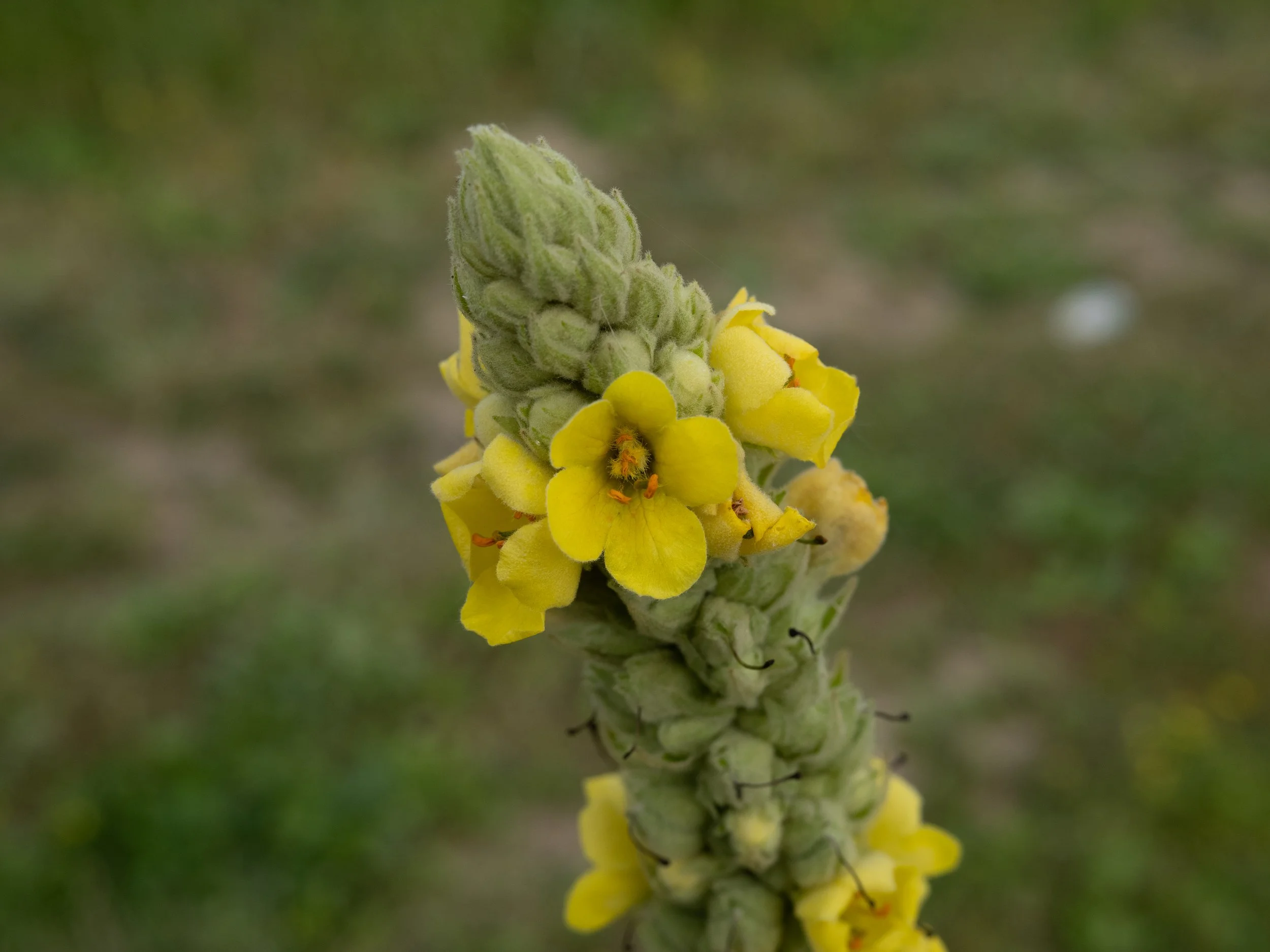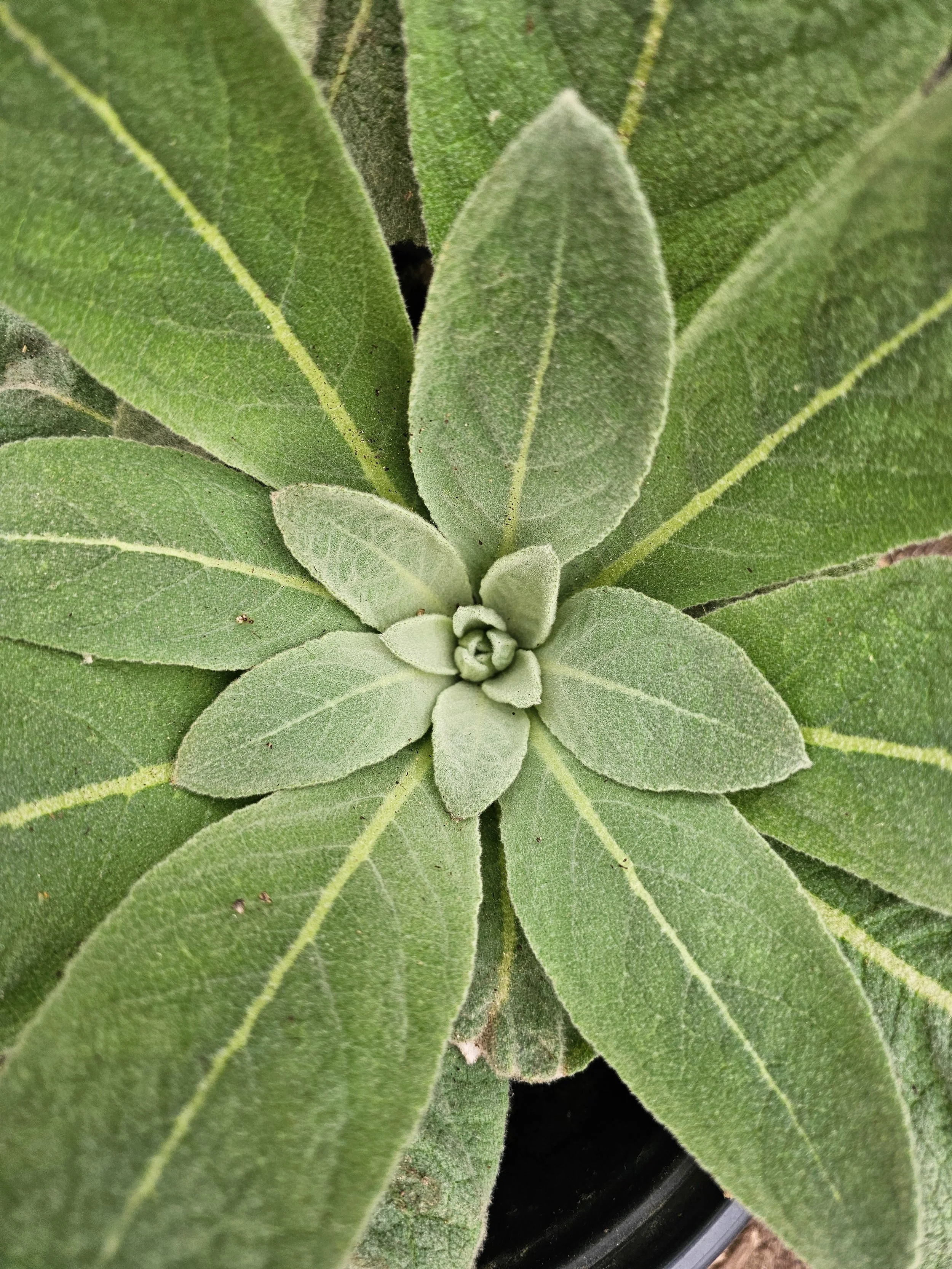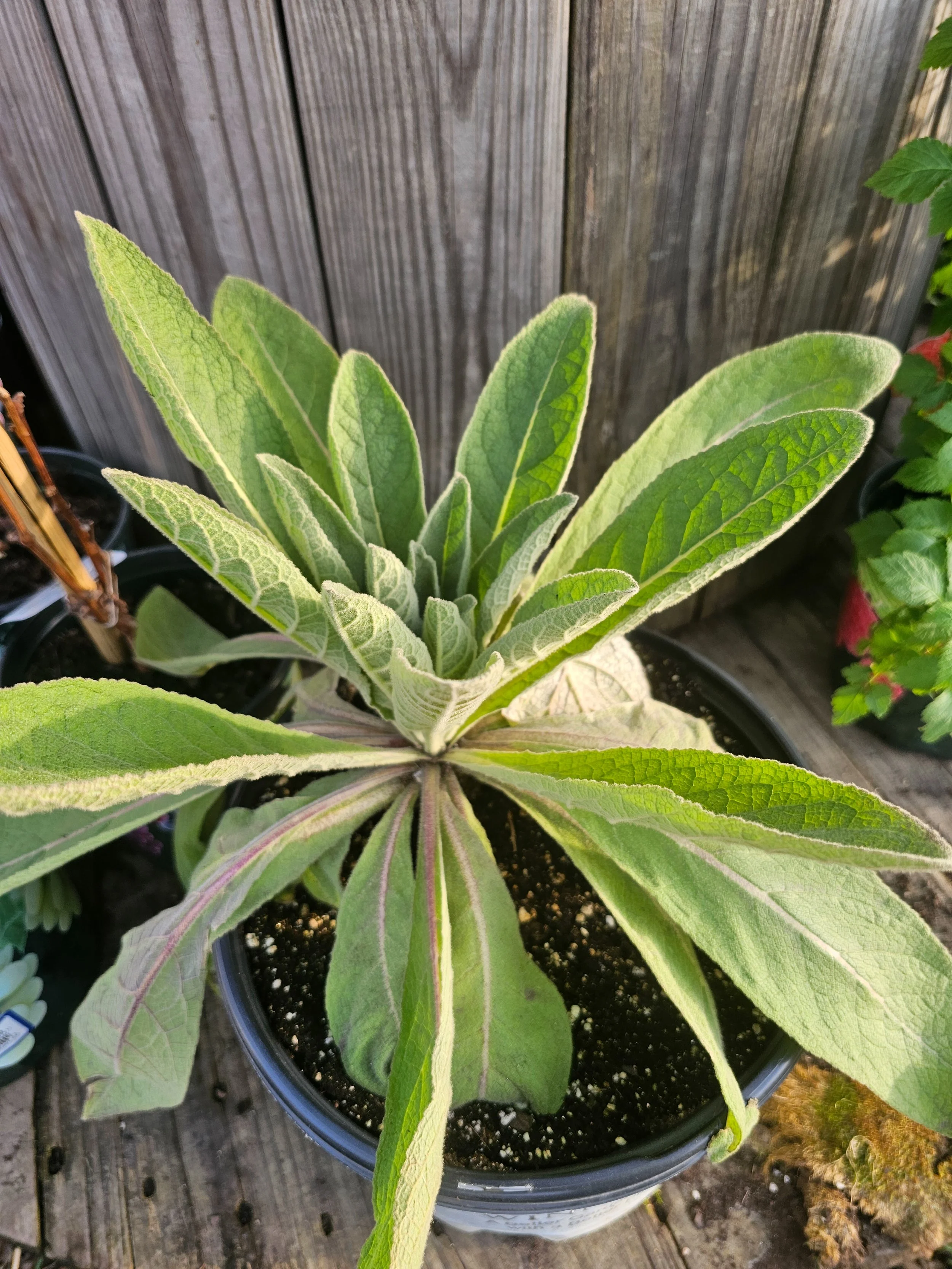HERBAL GUIDE TO MULLEIN (VERBASCUM THAPSUS)
Mullein seems to be a hot topic lately. So, here is a guide I have prepared, and I hope it includes the most useful information. Please let me know if there is anything I should add to it that I haven't thought of, or if you see a correction.
DEMOGRAPHIC INFORMATION
· Common Names: Mullein, Common Mullein, Great Mullein, Aaron's Rod
· Scientific Name: Verbascum thapsus
· Family: Scrophulariaceae
· Habitat: Mullein is typically found in well-drained, disturbed soils such as roadsides, meadows, and wastelands. It thrives in sunny locations.
· Identification: Mullein is a biennial plant. In its first year, it forms a rosette of large, velvety leaves. In its second year, it produces a tall flowering stalk that can reach up to 2 meters (6.5 feet) tall. The flowers are small, yellow, and form a dense spike at the top of the stalk.
HISTORICAL AND FOLKLORE USES
Mullein has been used since ancient times for various medicinal purposes. The Romans dipped the flower stalks in tallow to make torches. In European folklore, mullein was believed to ward off evil spirits. The plant was also used as a dye for textiles, producing a yellow color from the flowers and a grey color from the leaves and stems.
PARTS USED AND THEIR USES
LEAVES
Uses:
· Tea: Mullein leaf tea is commonly used to treat respiratory ailments such as coughs, bronchitis, and asthma. It acts as an expectorant, helping to expel mucus.
Preparation: Steep 1-2 teaspoons of dried mullein leaves in a cup of boiling water for 10-15 minutes. Strain well to remove the fine hairs, which can be irritating if ingested.
Dosage: Drink 1-2 cups per day.
· Smoked Herb: The leaves can be dried and smoked to help with respiratory issues.
Preparation: Dry the leaves thoroughly and crumble them into a smokable consistency.
Dosage: Smoke a small amount as needed for relief.
FLOWERS
Uses:
· Oil Infusion: Mullein flower oil is used to treat ear infections and earaches.
Preparation: Fill a jar with fresh mullein flowers and cover with olive oil. Let it sit in a warm place for 2-4 weeks, then strain the oil.
Dosage: Use a dropper to apply a few drops of warm (not hot) oil into the affected ear as needed.
· Tea: Flower tea can also be used similarly to the leaf tea for respiratory conditions.
Preparation and Dosage: Same as leaf tea.
ROOT
Uses:
· Tincture: Mullein root tincture is used for back pain, joint pain, and urinary incontinence.
Preparation: Fill a jar with chopped fresh root and cover with vodka or another high-proof alcohol. Let it sit for 4-6 weeks, shaking daily, then strain.
Dosage: Take 1-2 dropperfuls (about 30-60 drops) in water or juice 2-3 times a day.
SEEDS
Uses:
· Crushed Seed: Historically, mullein seeds were used as a fish poison, though this practice is not recommended due to its impact on the environment.
Caution: The seeds contain saponins and should not be consumed as they can be toxic.
TINCTURE PREPARATION
· Parts Used: Leaves, flowers, or root
· Method: Fill a jar with the fresh plant material, cover with vodka or another high-proof alcohol, and let sit for 4-6 weeks. Shake daily. Strain and store in a dark glass bottle.
· Dosage: Take 1-2 dropperfuls (about 30-60 drops) in water or juice 2-3 times a day.
CONTRAINDICATIONS AND CAUTIONS
· Allergic Reactions: Some individuals may be allergic to mullein. Test on a small area of skin before using it extensively.
· Pregnancy and Breastfeeding: Consult a healthcare provider before using mullein during pregnancy or breastfeeding.
· Ingestion of Seeds: Do not ingest mullein seeds due to their toxic saponins.
· Respiratory Issues: While mullein is generally safe, inhaling the fine hairs on the leaves can cause irritation. Always strain teas well to remove these hairs.
CONCLUSION
Mullein (Verbascum thapsus) is a versatile medicinal herb with a long history of use for respiratory conditions, pain relief, and ear infections. Proper identification and preparation are essential to ensure safety and efficacy. Always consult with a healthcare provider before beginning any new herbal regimen.
DISCLAIMER
The information provided in this guide is for educational purposes only and is not intended as a substitute for professional medical advice, diagnosis, or treatment. Always seek the advice of your physician or other qualified healthcare provider with any questions you may have regarding a medical condition. Never disregard professional medical advice or delay in seeking it because of something you have read here. Use of any information provided in this guide is solely at your own risk.
Constituents of Mullein (Verbascum thapsus)
Mucilage: Soothes and protects irritated tissues
Best Solvent: Water (infusions, teas)
Saponins: Has expectorant properties, aiding in the expulsion of mucus
Best Solvent: Water (infusions, teas)
Flavonoids: Provides anti-inflammatory and antioxidant effects
Best Solvent: Alcohol (tinctures)
Iridoids (Aucubin): Offers anti-inflammatory and antimicrobial benefits
Best Solvent: Alcohol (tinctures)
Glycosides: Known for their potential therapeutic effects
Best Solvent: Alcohol (tinctures)
Tannins: Astringent properties that can help tighten tissues
Best Solvent: Water (infusions, teas), Alcohol (tinctures)
Volatile Oils: Contributes to the antimicrobial and anti-inflammatory properties
Best Solvent: Oil (oil infusions), Alcohol (tinctures)
Resins: Provides antiseptic properties
Best Solvent: Alcohol (tinctures)
Mullein (Verbascum thapsus)
Flowering stalk - Second year of growth
Photo Credit: Organic Image Fine Art
Mullein (Verbascum thapsus)
Rosette - First year of growth
Photo Credit: Organic Image Fine Art
Mullein (Verbascum thapsus)
Second year growth - early season
Photo Credit: Organic Image Fine Art






